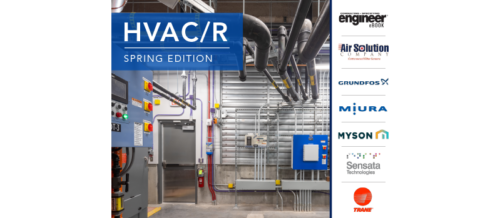High standards for labs, research buildings: Codes and standards
Laboratory and research facilities are high-performance buildings, often with complex systems and exacting standards for engineers to meet. Buildings must be designed to meet exacting codes and standards, including those from NFPA and IBC.
- Bryan Laginess, PE, LEED AP, Senior associate, Peter Basso Associates, Troy, Mich.
- Jeremy Lebowitz, PE, Vertical market leader, Rolf Jensen & Associates Inc., Framingham, Mass.
- Brian Rener, PE, LEED AP, Associate, SmithGroupJJR, Chicago
- Joshua Yacknowitz, PE, LEED AP, Associate principal, Arup, New York City
CSE: What codes, standards, or guidelines do you use as a guide as you work on these facilities?
Lebowitz: We work with the local and state building and fire codes, which often reference the International Building Code (IBC), International Fire Code, and International Mechanical Code (IMC); NFPA 30: Flammable and Combustible Liquids Code; and NFPA 45: Standard on Fire Protection for Laboratories Using Chemicals. These standards will dictate where users need to locate their hazardous materials and how to adequately protect them.
Yacknowitz: Typically IBC/IMC (including local amendments) and NFPA are the basis for lab design, along with ASHRAE. Specific local fire authority requirements need to be understood, and quite often a discussion with the fire authority during design is warranted to resolve issues that are not well addressed, or are contradicted, within the relevant codes. For biology labs, the National Institutes of Health (NIH) is a fundamental resource, and the Centers for Disease Control and Prevention’s Biosafety in Microbial and Biomedical Laboratories (BMBL) needs to be complied with for the various biological safety levels attributed to these labs. In Dept. of Energy laboratories, there are specific project management standards that influence the deliverable requirements at the various stages of design, as well as some very specific risk assessment requirements such as for oxygen depletion hazards. Finally, many of the larger academic, corporate, and government entities have their own lab design standards which must be adhered to.
CSE: Have Energy Star, ASHRAE, U.S. Green Building Council, etc., affected your work on laboratory/research facility projects? What are some positive/negative aspects of these guides?
Lebowitz: Without a doubt. While we understand and respect the importance of these standards, they often have competing objectives with life safety. For example, substantial ventilation rates are required for certain spaces so that flammable vapors don’t accumulate (and in some cases, to avoid needing classified electrical equipment). These supply and exhaust rates can be quite large compared to nonlaboratory applications and will accordingly drive energy use higher. As a result of these standards and the general desire to lower operating costs, we often get asked to assist in design alternatives which can lower ventilation rates (and energy usage) when labs are unoccupied.
Yacknowitz: ASHRAE plays a significant role in that some standards of practice, as well as some empirical equipment load data, are included there and are a terrific resource for the design engineer. The prevalence of lab projects going for LEED certification over the past several years has also made the U.S. Green Building Council an important player. Specific LEED credits such as M&V and Enhanced Commissioning have become standard pursuits on these projects, and that has contributed positively to overall project quality in my view. One problematic aspect of the LEED approach to quantifying energy efficiency (ASHRAE Standard 90.1) has been the way in which process/equipment loads have been accounted for in energy models, which makes it more difficult to achieve energy credits than with other building types.
CSE: Which code/standard proves to be most challenging in such facilities?
Yacknowitz: There are a number of them, but one would be segregation of control zone exhaust risers, which I understand is now being alleviated somewhat in the new IBC to allow subducts and manifolding of exhaust ducts in shafts.
Lebowitz: A lot of the time it’s less about which code is the most challenging, and more about how reasonable the authority having jurisdiction (AHJ) is for the project. In a lot of cases, especially in areas with strong laboratory growth, the building and fire officials are well-versed in the code requirements and are willing to work with the design team on compliance alternatives, which can save budget or increase flexibility and still achieve the requisite level of safety. This may mean increasing the level of fire protection or regulatory controls, like providing a specialty foam-water sprinkler system, in order to justify higher quantities of solvents than would otherwise be allowed.
CSE: Do you find codes affecting laboratory/research facility structures to be more or less taxing than those impacting work on other building types? In what ways?
Yacknowitz: The need to segregate control zone exhaust risers, control zone fire separation, chemical storage limits in control zones, and limits on number and type of control zone in upper levels of high-rise buildings are all constraints not seen on other building types.
Lebowitz: Laboratory design standards are rigorous for a reason—there have been a lot of safety incidents leading to these requirements. While it’s a good thing to learn from the collective history of laboratory users, it’s often a challenge to educate clients on the need for all these safety measures. When we tell a biotech company’s staff for the first time what their limits are for flammable solvents, they may have never heard of such limits before—but they’re there for a good reason, and may necessitate better fire protection systems as a result. The other challenge is getting users to buy in to compliance; the fire code is intended to be a way of running a business in the interest of worker safety and property protection, not a means to have the fire department slap a business on the wrist.
Do you have experience and expertise with the topics mentioned in this content? You should consider contributing to our CFE Media editorial team and getting the recognition you and your company deserve. Click here to start this process.





